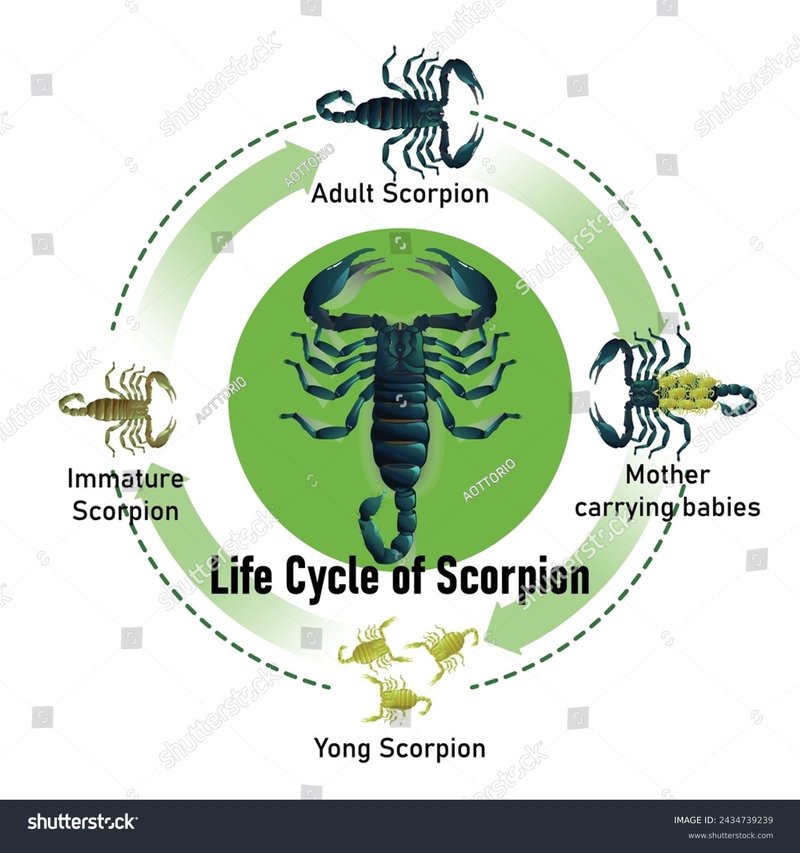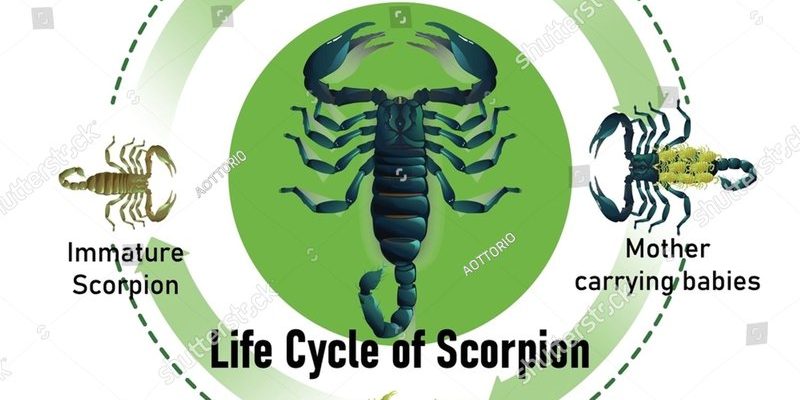
So, let’s dive deep into the scorpion life cycle. It starts with birth, where these little critters emerge into the world, and unfolds through various stages until they reach adulthood. Along the way, you might find some surprise twists that make their life cycle all the more interesting! Get ready to explore how scorpions grow, survive, and thrive.
Stage One: Birth – The Beginning of Life
When scorpions are born, they’re not born like other animals. Instead, they hatch from eggs that are carried inside the mother’s body. This means that the newborns are actually live births! It’s a bit like a surprise party, where tiny scorpions emerge from their mother, ready to face the world. Typically, a mother scorpion can give birth to anywhere from 20 to 50 young, known as “scorplings.”
Once they are born, these scorplings climb onto their mother’s back. You might wonder why they do this. Well, it’s a pretty smart survival tactic! By riding on their mom, they stay safe from potential predators and get their first taste of mobility. This stage lasts for a few weeks, during which the young scorpions learn to navigate their surroundings while clinging to the protection of their mother.
Stage Two: Growing Up – The Molting Process
Now here’s where things get interesting. As the scorplings grow, they undergo a process called molting, which is essential for their development. Molting is when a scorpion sheds its exoskeleton to allow for growth. Think of it like taking off a snug hoodie that has become too tight; it’s all about making room for growth!
During their first molt, scorplings leave behind their old skin. They usually molt several times in the first year, and each time, they become a bit bigger and more developed. This process can be tough for them; they’re vulnerable during the molts. Predators can easily spot them while they’re shedding their skins, so they often stay hidden until it’s complete.
Stage Three: Teenage Scorpions – Growing Independence
Once they’ve completed a few molts, the scorplings start inching closer to independence. At this point, they’re still under the care of their mother, but they might begin to venture off her back. This is a crucial time for exploration. They start hunting small insects to eat, practicing their predatory skills.
You might be thinking, “How do they learn to hunt?” Well, scorpions have great instincts. Even as young scorplings, they know to stalk and ambush their prey. Research shows that they can even detect vibrations in their environment. It’s like having a built-in radar that helps them sense when dinner is nearby!
Stage Four: Maturity – Sexual Development
As time passes, scorpions continue to grow and experience more molts, moving closer to maturity. This stage can take anywhere from a few months to several years, depending on the species and environmental conditions. Once they reach maturity, scorpions are around 2 to 3 years old.
When they become adults, they also enter the mating phase. But mating isn’t as simple as it sounds for these creatures! Scorpion courtship involves a dance of sorts, where the male and female perform a series of movements before mating. It’s fascinating to observe how they communicate through these behaviors.
Stage Five: Lifespan – Living as an Adult Scorpion
Adult scorpions can live quite a long time—often 3 to 8 years, depending on their species and habitat. Some species even live up to 25 years! As adults, scorpions become solitary creatures, often preferring to hunt and live alone. They develop a more robust body, complete with strong pincers and a venomous stinger. This is their defense mechanism, and it helps them take down prey efficiently.
Interestingly, scorpions are resilient and can survive in extreme conditions. They can go for months without food and can even withstand high levels of radiation. Their adaptability is key to their survival in various environments, from deserts to rainforests.
So, there you have it—the incredible journey of a scorpion from birth to adulthood! From the tiny scorplings clinging to their mother’s back to powerful adult hunters in the wild, scorpions have a life cycle filled with growth, danger, and survival tactics that are nothing short of amazing.
Understanding the scorpion life cycle helps us appreciate these creatures beyond their sometimes intimidating appearance. They play important roles in their ecosystems, managing insect populations and contributing to the biodiversity of their habitats. Next time you spot a scorpion, you might just see it in a whole new light, recognizing the fascinating life story it carries with it!

